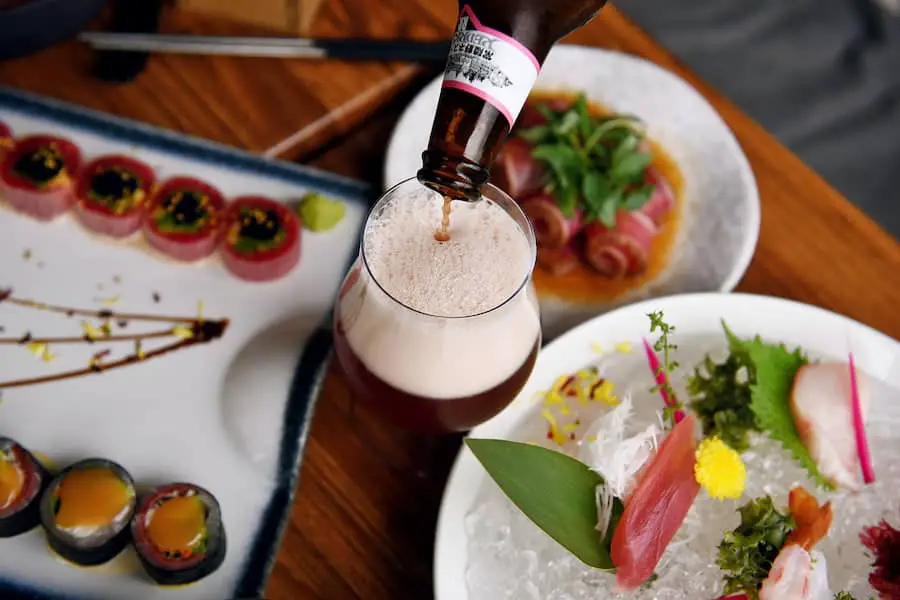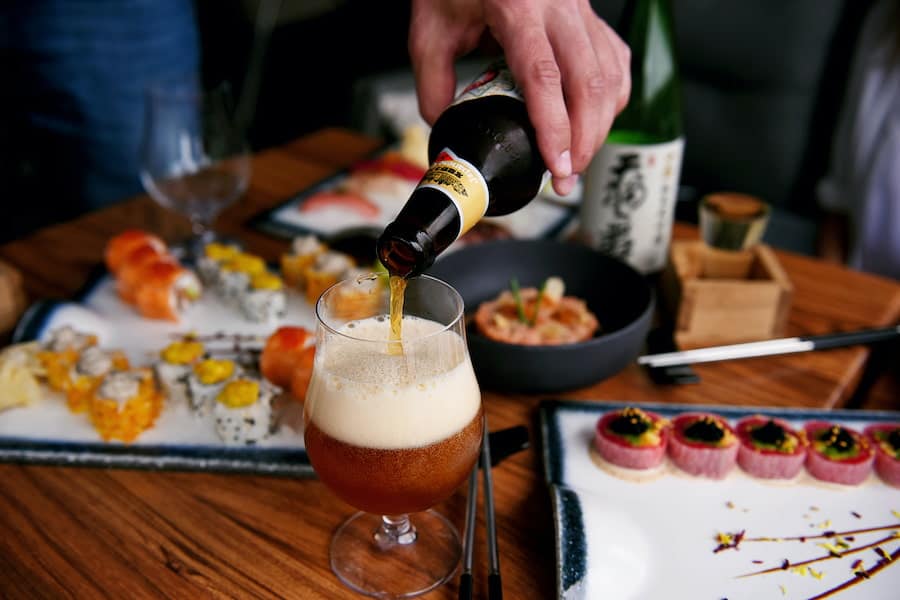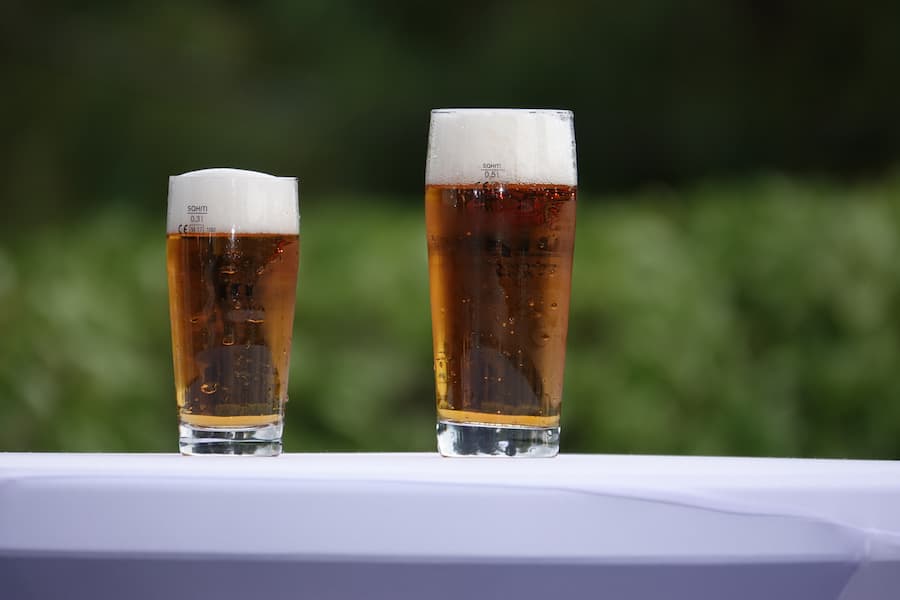If you buy something through a link in our posts, we may get a small share of the sale.
You may want to use carbonation drops during the secondary fermentation to give the beer a refreshing and light feel in your mouth. However, learning how to use carbonation drops and how many drops to add to optimally carbonate the beer can be quite challenging to many brewers.
Contents
How to Use Carbonation Drops
Carbonation drops are small pre-measured balls of sucrose and glucose that you can add to beer bottles during the bottling process. Before bottling, you can use them as a priming sugar substitute when carbonating your homebrew.
Considering they are pre-measured, they help eliminate the risk of having beer bottle bombs or uneven amounts of sugar, which can create the possibility of under carbonation in some beer bottles. If you are using large containers, you can use more than one carbonation drop at a time.
Without carbonation drops, homebrewers must measure sufficient sugar to carbonate a whole batch, mix it into boiling water, then mix it into the entire batch of beer. The method is risky because, in case of any miscalculations, too much pressure will build up in the bottle resulting in explosions.

The Number of Carbonation Drops to Use Depends on the Bottle Size
The number of carbonation drops to add to every beer bottle depends on how big your bottle is. Although not the exact piece of math, most carbonation drops will offer the following measurement instructions in their package:
| Bottle size | Carbonation drops |
| 12 ounces/330 ml Bottle | 3/4drop |
| 16 ounces/500 ml Bottle | 1 drop |
| 22 ounces/750 ml Bottle | 2 drops |
| 32 ounces/10000 ml Bottle | 2.5 drops |
| 2000 ml Bottle | 5 drops |
| 3000 ml Bottle | 7.5 drops |
You should add the drop after sanitizing the bottle and before adding beer. You also need to give the drops time to dissolve.
Advantages of Using Carbonation Drops
Although carbonation drops work like the priming sugar, there are distinct reasons why carbonation drops might be preferable over priming sugar during the bottling phase. Let’s dive into more details on why carbonation drops stand out in terms of reliability, efficiency, and convenience.
Easy to Dissolve
Carbonation drops are 73% dextrose and 27% glucose, allowing them to dissolve easily in any liquid. They eliminate the chances of getting off-flavors in your beer as all the sugar dissolves in the beer bottle.
Easy to Use
When using carbonation drops, you are sure to add an equal amount of sugar to each bottle of brew. It relieves you of the stressful task of accurately measuring equal amounts of priming sugar. Also, they ensure consistent carbonation in all your brews, preventing the risk of beer bottle bombs.
Reliable
Using carbonation drops assists you overcome the risk of under or over-carbonation as they come packaged with accurate measurements. Carbonation drops do not expire, and all you need to do is store them properly. That means you don’t have to worry about adding them and bottling your beer, only for them to fail to work.

Ingredients in Carbonation Drops
There are many brands of carbonation drops, and they all have a slight difference in their ingredients. The primary ingredient in carbonation drops is sugar. However, the kind of sugar in different carbonation drops varies with manufacturers.
In many cases, it will be sucrose (table sugar), glucose, dextrose (corn sugar), or a combination of all. Make sure you check the packaging to know the exact ingredients in the carbonation drops. Many brewers may have a type of sugar preference, however, there’s not much difference between the sugar you choose.
Coopers carbonation drops are just a simple sugar, and you only require them at low volumes. They enhance consistency when brewing, leave no off-tastes in your beer, and also help prevent gushers from occurring.
Quick Tips When Using Carbonation Drops
Even though carbonation drops are convenient and effective in their carbonation, here is a quick tip to follow to increase their efficiency.
Keep an Eye on the Temperature
Remember that carbonation takes place because you have activated the yeast by adding carbonation drops. It means the yeast in the beer requires optimum temperature for secondary fermentation. If you subject the yeast to low temperatures, it might end up sleeping, and carbonation won’t take place. Using a yeast energizer might start the fermentation process again.
Under the right room temperatures, the yeast consumes all the carbonation drops and produces carbon dioxide as a by-product, dissolving in the beer and carbonating it. However, if the room is too hot, the chances of getting off-flavors are high.
Make Sure carbonation has finished before you open the bottles.
Be keen not to open the bottles before carbonation has finished. Hold the bottles against the light and look at the clearance gap that expands from the upper part of the beer bottle to the bottom.
How Do Carbonation Drops Work?
Carbonation drops add more sugar to every beer bottle, allowing residual yeast to become active again, consuming the sugar, and generating sufficient carbon dioxide to carbonate the beer. Since you have capped the bottle, the carbon dioxide diffuses in the beer rather than escaping like in the primary fermentation phase.
In most cases, homebrew beer bottles have some sediment at the bottom because of mini-fermentation. The sediments consist of inactive yeast that falls back out of the beer after complete carbonation.
Do Carbonation Drops Have an Expiry Date?
All brewers make an effort to ensure they don’t waste any brewing material, whether carbonation drops, hops or grains. As long as you store them properly, carbonation drops have no expiry date and won’t go bad.
It is advisable to store them in a cool, dry place and protect them from pest invasions such as mice and ants. The packaging of most carbonation drops is convenient, allowing easy storage and usage for years without going bad.
How Long Do Carbonation Drops Take To Work?
Typically, when you use carbonation drops as your sugar source, they take about a week to carbonate your beer. You then cap the beer bottles to allow carbonation to start, and carbon dioxide gets trapped in the bottle.
A layer of sediment will then form at the bottom of the bottle. This sediment is a clear indication that carbonation is complete. It is advisable not to drink the beer right away because the carbonation is complete. You can allow it to continue conditioning in the bottle for a long time as you would wish as it will not be losing carbonation.
Why Is It Necessary to Carbonate Beer?
Carbonation is an important part of the beer-making process as it offers a sparkle to flat and dull beer, making it fresh and lively.
Carbonation gives your brew bubbles and fizz and helps extend the shelf life of the beer. Additionally, carbonation greatly impacts aroma and flavor, giving your beer light and refreshing feel in the mouth.

Frequently Asked Questions
How Do I Tell That a Bottle Is Carbonating?
You only need to overturn the bottle and without using too much force put it back to its initial position. Look at your bottle’s clearance gap and note down the amount. Then check out whether bubbles are forming or floating on the upper part of your beer.
Why Do Some Beers Have No Sediment?
The beer will have no sediment if you use a two-part cap when bottling. The two-part cap bottling involves fermenting and carbonating your beer with the bottles inverted such that the sediment falls into the cap.
Once the carbonation process is complete, you remove the part of the cap containing the sediment and leave the other part sealing the bottle. In the end, your bottle will be conditioned and sealed without any sediment.
Can I Use Carbonation Drops in a Keg Setup?
Considering that a keg setup works like a big bottle, and you can carbonate it using priming sugar, it is also possible to carbonate using carbonation drops.
The carbon dioxide will help displace the oxygen in the air in the beer. You only need to determine how many carbonations drops to add into your keg setup depending on the size of your keg, and then make a tight seal.
Do Carbonation Drops Require Sterilization Before Use?
Like any other type of sugar, carbonation drops do not require sterilization. You should ensure your hands are clean before taking them out of their freshly opened packets to avoid contaminating them.
Final Thoughts
Knowing how to use carbonation drops will help eliminate under carbonation or over carbonation risks. Keep in mind that over carbonation can even result in bottle bombs. Carbonation drops are easy to use, dissolve easily, and are more reliable than other types of carbonation.

